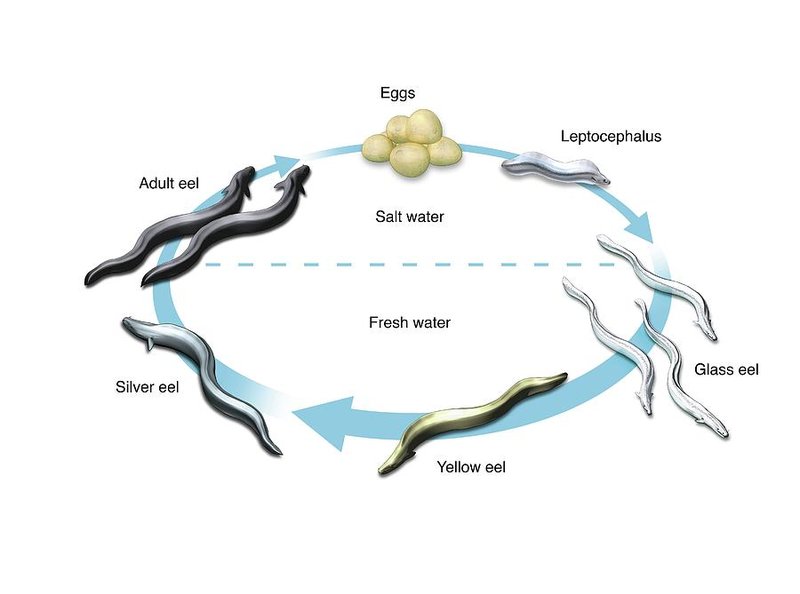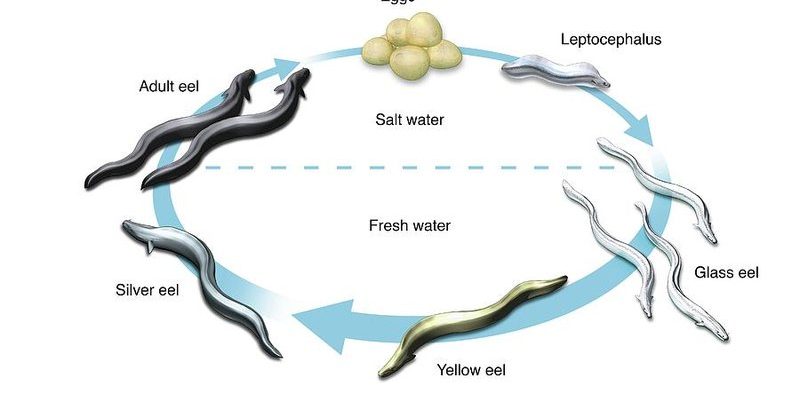
Now, if you’re thinking about how these little guys live, grow, and behave, you’re not alone! Many people share this curiosity, especially when it comes to how they fit into the broader picture of nature. So, let’s dive into the life cycle of the vinegar eel and explore each stage like we’re flipping through a photo album of their lives.
What Are Vinegar Eels?
Before we dig into their life cycle, let’s clarify what vinegar eels actually are. These slender, transparent worms can be found in various fermented foods, especially in vinegar itself. They’re part of the nematode family, which contains thousands of species. Vinegar eels thrive in acidic environments, making your bottle of vinegar the perfect home.
These critters are harmless to humans and actually help break down organic matter in their environment. So, you might find some swimming around in that old jar of apple cider vinegar you’ve got tucked away! It might seem gross at first, but think of them as nature’s clean-up crew. They play a supportive role in the fermentation process, ensuring that your vinegar stays fresh.
The Beginning: Eggs
The life cycle of the vinegar eel begins with eggs. The female vinegar eel lays tiny, invisible eggs, which are often found hidden in the sediment at the bottom of a vinegar jar or fermenting fruit. These eggs are quite resilient and can withstand unfavorable conditions, waiting for the right moment to hatch.
Once the conditions are just right—think warm temperatures and the right acidity level—the eggs hatch into larvae. This stage is crucial because it sets the tone for a vinegar eel’s entire life. You might be wondering how long it takes for the eggs to hatch. Usually, it’s around 4 to 10 days, depending on the environment. That’s a quick transition from a tiny egg to a wiggle in the vinegar!
Stage One: Larvae
After hatching, vinegar eels emerge as larvae. At this stage, they’re approximately 1 mm long. They look like tiny, squirmy worms and are constantly on the move, swimming through their liquid habitat. This period is all about growth and development. The larvae feed on the bacteria and yeast in their surroundings, which keep them nourished and full of energy.
As they’re munching away, these larvae undergo several molts. Each molt allows them to shed their skin and grow larger. Honestly, it’s like peeling off a tight sweater to fit into a bigger one! This growth phase can last anywhere from a few days to a couple of weeks, depending on the food availability and environmental factors.
Stage Two: Juveniles
Once the larvae have had their fill and grown through their early stages, they graduate to the juvenile stage. This is where they start looking more like adult vinegar eels. At this point, they’re about 2 to 3 mm in length. You can notice some differences in their appearance, such as a more developed body structure and the ability to swim with greater agility.
During this period, the juveniles continue to feast on organic matter and microorganisms, further contributing to their growth. They also begin to develop their reproductive organs, signaling that they are nearing adulthood. Isn’t it interesting how they have to put on some weight before they can even think about making little eels of their own?
Stage Three: Adults
Now, let’s talk about the adult stage. A vinegar eel reaches full maturity in about 2 to 3 weeks after hatching. Adult vinegar eels can measure up to 5 mm long. They’re more than just longer versions of their younger selves; they also exhibit unique behaviors and reproductive patterns.
Adults continue to thrive in their acidic environments, swimming gracefully through the liquid. Their diet remains largely the same, focusing on bacteria and organic matter. Here’s the thing: they can reproduce without requiring a mate! Female vinegar eels can produce hundreds of eggs, which keeps the population robust. It’s like having a self-sustaining little community right there in your vinegar!
Behavioral Patterns: Swimming and Feeding
Vinegar eels are not only fascinating because of their life cycle—they also display interesting behaviors throughout their lives. Most notably, they have a unique swimming pattern. You might spot them wriggling and darting about, which helps them navigate through their environment while searching for food.
Their feeding strategy is quite effective. They absorb nutrients from the surrounding liquid, swimming toward bacteria clusters to feast. This behavior plays a crucial role in maintaining a healthy ecosystem in fermented products. If there’s an abundance of bacteria, you can bet those eels are going to be joyful little munchers!
The Role of Vinegar Eels in the Ecosystem
Vinegar eels are more than just a curious sight in your vinegar. They play a vital role in the ecosystem, especially in fermenting environments. By consuming bacteria and organic material, they help maintain balance and promote healthy fermentation processes.
This process is essential not just for vinegar production, but for the overall health of the ecosystems they inhabit. The presence of vinegar eels indicates a thriving microbial community, which is a good sign for any fermentation enthusiast. If you’ve got vinegar eels in your jar, it’s a good sign that your fermentation is alive and well!
From tiny eggs to wriggly adults, the life cycle of the vinegar eel showcases nature’s creativity. These fascinating organisms remind us of the delicate balance within ecosystems and the importance of even the smallest creatures. So, the next time you reach for that jar of vinegar, take a moment to appreciate the tiny lives swimming within. They may be small, but they certainly play a big role in our world!

